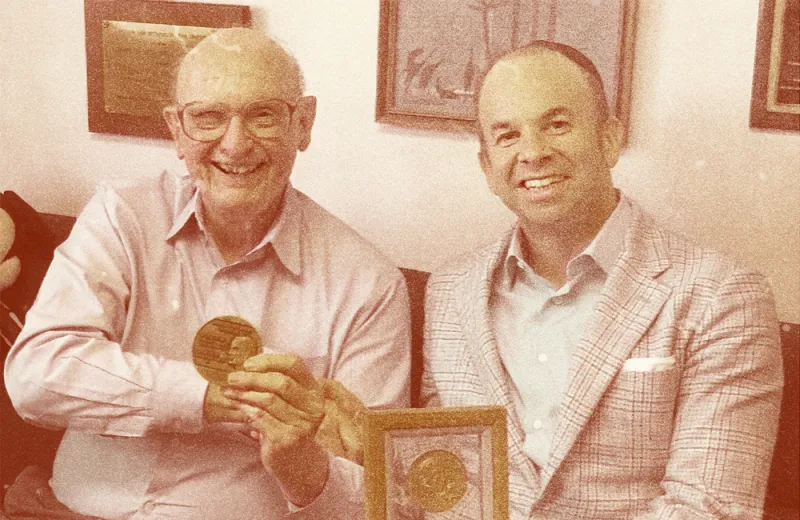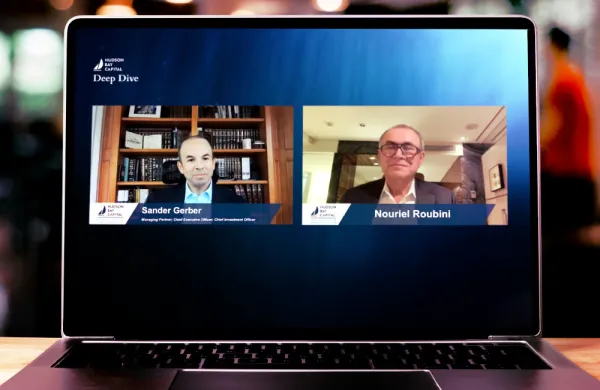Countless investors, ranging from pensioners and hospital endowments to everyday individuals, are wealthier today because of Harry Markowitz, a Nobel Prize-winning economist who recently passed away at 95 years old.
Markowitz’s seminal innovation, a framework for investment portfolio diversification, which has been diligently applied by investment managers and committees worldwide for decades now, changed the face of investing. In his 1990 Nobel lecture, Markowitz modestly proposed that his pioneering work on portfolio theory could at least benefit large investors. As we now appreciate, this was one of the bigger understatements in Wall Street history.
The crowning achievement of Markowitz’s brilliant career was the development and quantification of the advantages of diversified investing across asset classes in an unpredictable world. Today, optimizing reward versus risk may seem as self-evident as gravity, evolution, or electricity, yet it took Markowitz’s insightful mind to identify and formalize this revolutionary perspective.
For more than three generations, savvy investors have employed diversification, the only “free lunch” in finance, to generate optimal risk-adjusted returns when investing in stocks, bonds, and commodities. Markowitz's groundbreaking principles earned him the title the “father of modern portfolio theory.”
A new generation of investors is applying this same approach — using diversification to optimize reward-risk across active portfolio managers and investment strategies. The result is a growing multibillion-dollar industry of multistrategy hedge funds, generating investment results where the whole far outstrips the sum of its parts. We should add “grandfather of multistrategy hedge funds” to his list of well-deserved titles.
Not one to rest on his laurels, Markowitz’s insatiable curiosity and ambition continued to push boundaries. Forever grateful for the chance to be his friend and work with him, I discovered we shared a profound skepticism that past correlations could successfully predict future correlations. This collaboration led to advancements in his MPT. Our joint work, “The Gerber Statistic: A Robust Co-Movement Measure for Portfolio Optimization,” improves upon traditional correlation metrics to ultimately deliver better risk-adjusted returns.
During our many enlightening work sessions over more than a decade, I grew to appreciate Markowitz’s introspective humility. I deeply admired his openness to new ideas and am forever grateful that he was driven to refine and hone MPT — long after it had cemented his legacy.
Markowitz understood that investing is inherently uncertain. Despite his reliance on financial models, he was mindful of their limited predictive power. You might even say he harbored skepticism toward historical correlation’s predictive power, writing in his 1952 paper that correlation inputted to investment processes should be determined by “the judgment of practical men.” His groundbreaking research fused statistics and economics and ultimately established clear rules for portfolio management within which human judgment could flourish.
In our conversations, Markowitz explained finance as a social science rather than a hard science. The rise of computing power in the 1960s and into the 2000s saw financial engineers increasingly utilize historical data in an attempt to predict correlation within MPT and other financial risk models. Markowitz was clear-eyed on this topic and in one of our collaborative papers highlighted that historical correlation actually did not relate to future performance.
Markowitz’s passing coincides with the dawn of a new age in finance. During his career, rapidly expanding computing power allowed investors to deploy his tools and benefit from diversification. But quantitative tools need to complement rather than replace human insight — a lesson the finance community needs to relearn every decade or so. Now, we have a boom in natural language models and artificial intelligence. No doubt Markowitz would find these computational innovations fascinating and useful in the quest for investment diversification. I suspect he would also remind us that they are best used as tools to improve investment processes rather than as replacements for human judgment. His wisdom and guidance will be sorely missed, yet his legacy will forever help “optimize” the world of investing.
Sander Gerber is CEO and CIO of Hudson Bay Capital, a global investment management firm. In 2008, Gerber developed the Gerber Statistic, which measures the co-movement of financial assets, enabling early detection of concentration risks and insufficient diversification within an absolute return portfolio.






